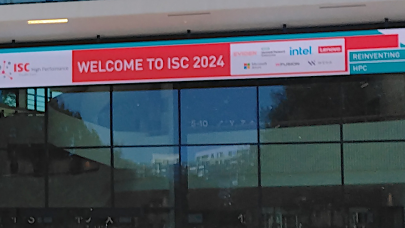Ottawa-based charitable organization Cancer Computer is on a mission to stamp out cancer and other life-threatening diseases, including coronavirus, by putting to good use discarded high-end computer hardware that would otherwise end up in landfills. Their tagline is “a cure could be waiting in line,” and their objective is to point as many cycles as possible at eliminating computational wait times that impede medical advances.
Since its founding five years ago, Cancer Computer has amassed 14,300 cores, in-line with the computing capacity of a mid-sized university, for researchers across the United States and Canada. In a typical scenario, Cancer Computer gets hardware from a corporate partner that’s upgrading their own hardware and supports the mission of helping advance omics-based research.

But Cancer Computer doesn’t just focus on cancer, it also supports neuroscience research, contributing spare cycles for protein structure prediction via the Rosetta@home project (for which it is the #1 supporting org). And now Cancer Computer has joined in the global fight against the coronavirus pandemic by directing all available cycles to Rosetta’s COVID-19 project that assists scientists at the University of Washington’s Institute for Protein Design in Seattle. Similar to the Folding@home crowdsourcing coronavirus research project (see related story), Rosetta@home is modeling SARS-CoV2 protein interactions with potential drug targets.
When I spoke with Chartier in February, he was excited about a recent large donation, a tranche of 400 servers from the Canadian government. Chartier rattled off a number of sites where Cancer Computer has deployed its donated hardware: the University of Illinois at Urbana-Champaign, Indiana University, the University of Utah, Queens University in Kingston, ON, and McGill University, Montreal, to name a few. There are a number of private sites as well. As you’d expect, having been in production a few years, most of the donated hardware is Intel-based, but among the thousand-or-so nodes put into service, there are a couple dozen AMD servers and several GPU racks. Chartier said he’s interested in getting more AMD gear, which he says has demonstrated good results on some of the bio-benchmarks, like GROMACS.
Typically, Cancer Computer allocates 75 percent of its donated resources to the host institution with the remaining 25 percent dedicated specifically for the organization’s charitable goals through a number of projects. These include Open Science Grid, XSEDE, as well as Boinc-based distributed research networks, the World Community Grid and Rosetta@home. Cancer Computer also fields specific requests for researchers who do not have other resources available to them.
Cancer Computer’s donated servers are deployed either at a host institution or in a colocation facility operated by Cancer Computer or a partner. As the organization scales, Chartier would like to grow the colo side, with an eye to sites in green-power regions, including Quebec and Ontario, rich in hydro-electric power, and possibly geo-thermal powered Iceland. Certain workloads, such as ones involving clinical data, mandate the need to comply with HIPAA or PHIPA (Canada’s version of HIPAA), which can only be guaranteed in a commercial datacenter.
As a charity, funding is a constant challenge. Although the computers are donated and the staff are volunteers, there are still expenses: replacement hard drives, SSDs, RAM, switches and rails, as well as travel expenses for on-site installations. There is right now a concerted effort at Cancer Computer to build up their board and secure corporate sponsorships in order to scale and be more sustainable. A near-term goal is to employ one or two full-time techs and to implement cost recovery measures.
“We find people that we ask [to be involved] and they’re very passionate about it; they’re willing to help where they can, so it’s just a matter of finding the right people, the right institutions, the right projects, and the right donors, you know, the people who want to support you,” said Chartier.
Supercomputing has a history of giving decommissioned systems a new lease on life. This includes the high-profile donation of TACC’s Ranger system to universities in South Africa, as well as the UCSD Gordon system put into service at Simons Foundation’s Flatiron Institute in New York. But some donations you probably haven’t heard of. For various reasons, the partners may not want to make it public; often because they don’t want to ruffle the feathers of vendors in the business of selling the next-generation of gear. But with so many good causes needing processing power and the importance of reducing e-waste, there is growing support in the community – vendors included – for extending the life of systems that would otherwise end up in a landfill.
“The whole thing comes down to open science, right?” said Chartier. “Open science and sharing of data, sharing of research. If we get, let’s say, two or three more sites, and we had a constant inflow of gear, and we had enough money to be able to have technicians clean it, update the firmware and ship it to these locations, we continue to develop this international e-infrastructure, and make it sustainable and much bigger – I mean, no matter how much money you throw at a problem, particularly like cancer, you know, there’s always room for more.”
“We don’t want to compete with the vendors,” he added. “But if there’s usable, secondhand gear that’s being thrown out, my goodness, that’s definitely something that that really shouldn’t happen.”
A number of prominent organizations agree. At the University of Illinois at Urbana-Champaign, Cancer Computer’s deployment of 300 servers supports the work of more than 500 researchers per year. Cancer Computer is in the process of installing a high-throughput cluster at McGill comprised of some 400 servers. Indiana University is another high-profile site; the partners recently extended a three-year relationship.
For donations, Cancer Computer only accepts gear that’s less than 10 years old. On the compute side, Cancer Computer looks for Ivy Bridge processors or better; for storage it can go back a generation or two. The better equipment gets put into production, and the charity is also building an internal system with plans to assist partner universities with code development and the building of in-house applications.
In most cases, the hardware that Cancer Computer gets is at the end of its support contract. “We can give it a second life. Outside of a DMZ, the servers can run lots of workloads if there’s no personal data, and you don’t typically need the same levels of security that you would require with warrantied gear. Even if 10-20-30 percent of your drives are dead, you can set up your storage to be distributed and you can run, no problem. HPC can be engineered and architected in such a way to do that. It’s not a five-nines scenario,” he said.
Canada HPC
Chartier also updated us on Canada HPC, formed when some of the volunteers from Cancer Computer saw a commercial opportunity for workloads outside the cancer research space, as Cancer Computer’s mission is to provide compute resources to researchers either free where possible, or heavily discounted on a cost-recovery basis.
Earlier this month, Canada HPC signed a partnership agreement with Dell. As a solutions provider for Dell, Canada HPC will do everything from the rack-and-stack, configuration, deploying the scheduling tools, up to and including support. Chartier explained that Dell saw a need and reached out to them – and Canada HPC had the necessary Canadian federal government security clearances.
















